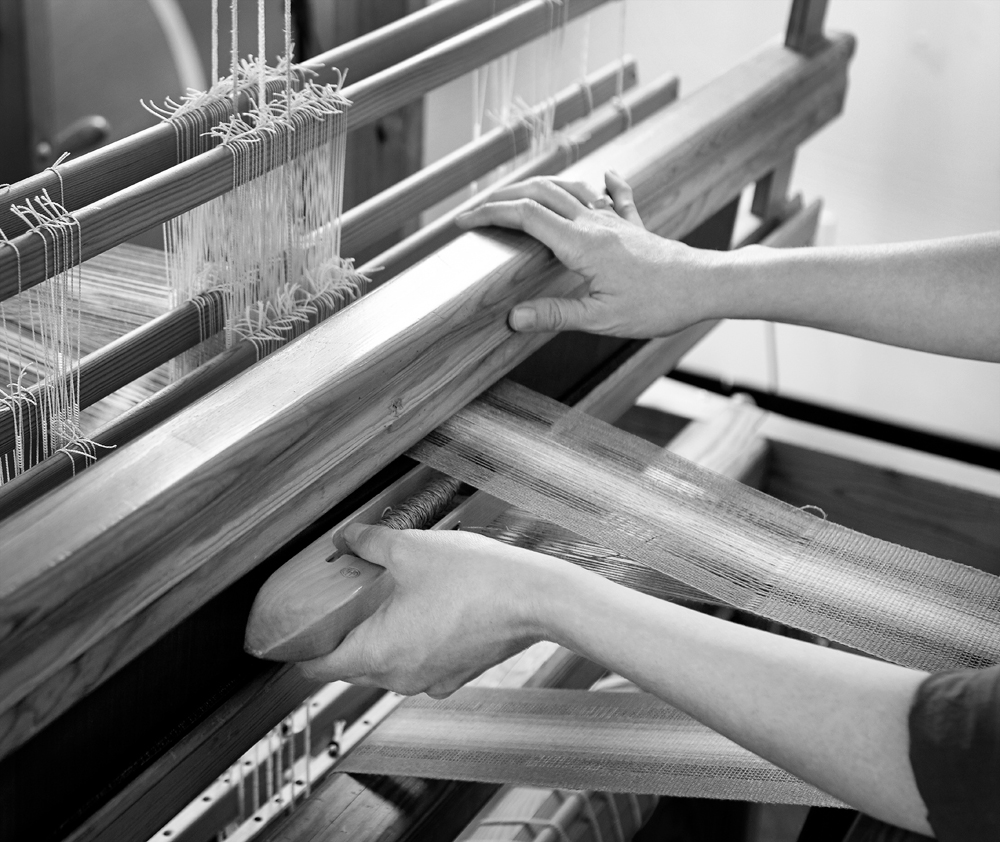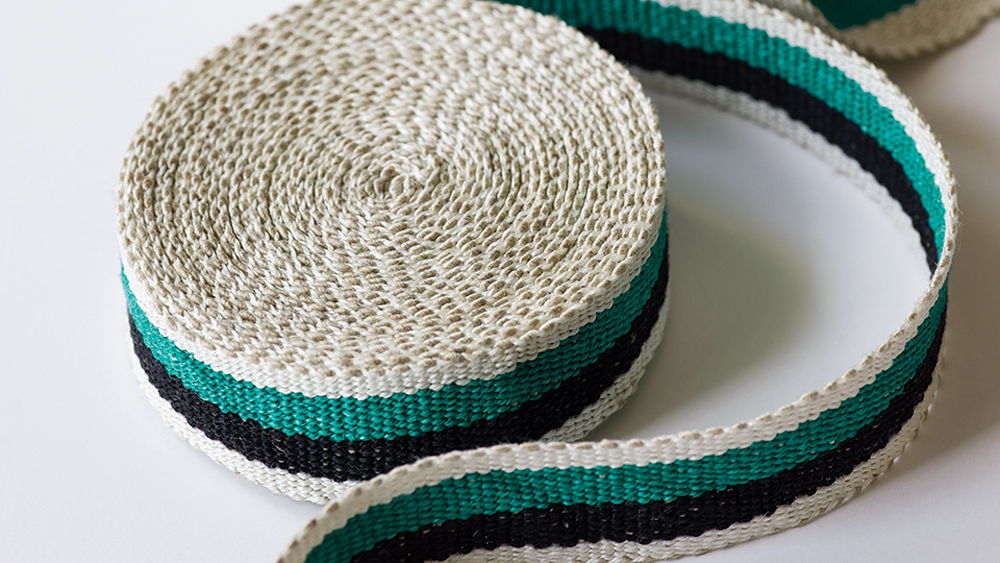Photos by Richard Gary
Stephanie Seal Brown was growing up on an Oklahoma pecan farm when her eighth-grade class took a field trip to a colonial village. Afterward, she couldn’t stop thinking about crafting things by hand. “I loved that all the wooden spoons were made by someone. It was heaven to me,” she says. “I would’ve been perfectly happy living in, like, 1720.” Today, the 42-year-old textile designer and weaver splits time between New York and her space inside the Germantown building that once housed the Hope Worsted Mills Co.
Her Louisville studio has lots of natural light, deep-brown wood floors and two Swedish looms. Seal Brown started weaving as a teenager. “When I was a kid there was this really nerdy, academic side to me, and when you’re intense like that and in your head, you have to offset it. For me, it was doing handwork,” she says. She eventually moved to Boulder, Colorado, where she found a weaving community. “Most of my peers were three to four decades older than me,” she says with laugh. In 2015, 11 years after moving to Louisville with her first husband, she started Stephanie Seal Brown Handwovens, while also homeschooling her two boys and working at the historic Little Loomhouse near Iroquois Park. Now, she designs pillows and hand towels, and linen tape used by other designers to create, say, trim on drapes or a couch. A single pillow can cost $450. “It’s the idea of what is of value to someone in the world — a $120 hand towel may be for some people,” she says.

“Nothing is hard to get anymore. You can buy anything on Amazon in an instant, and there was this period of time when I was like, ‘Oh, my golly, that’s a problem,’ but the fact that we’re able to make things quickly and easily also means we can go back and focus on handcrafted things that are meaningful to us.”
Seal Brown says preparing the loom “is kind of like setting up a machine in a factory.” It takes her 30 to 45 hours to make a group of 30 17-by-24-inch towels. “It’s really meditative,” she says. “It’s repetitive, but it’s the kind of repetition I like. I get into the zone and stay there. If I get out of my zone or have a stressful moment, I can see it in my weaving.”
Seal Brown’s simple designs feature rich colors — blue, yellow, copper, cocoa. For yarn, she uses Egyptian cotton and linen from Europe that’s dyed in Sweden. She’s partial to stripes, mentioning abstract painter Agnes Martin as an inspiration. One of Seal Brown’s hand towels was influenced by her father’s favorite chewing gum, Juicy Fruit. A hallway she glimpsed on a trip to Paris inspired one version of her striped linen tape, with white, black and a silvery blue. “If you just keep your eyes open, everything is interesting,” she says.
Learn more about Stephanie Seal Brown Handwovens at their website or on Instagram.
This originally appeared in the August 2018 issue of Louisville Magazine under the headline "Caught on Tape." To subscribe to Louisville Magazine, click here. To find us on newsstands, click here.



